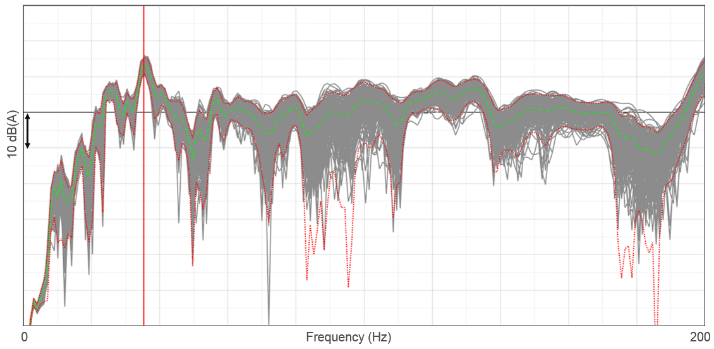Improving NVH Prediction with Multi-Sample Analysis (MSA)
This is the last part of the four-part series on Automotive NVH comfort based on the paper, “Improving Vehicle NVH CAE Prediction Capability to Prevent Expensive Late Design Changes” written by Andrew Burke, Global NVH Manager at Altair. Click here for parts one, two and three of the series.
Including more physical effects in simulations is one aspect in improving NVH prediction capability. Another aspect is that in reality NVH results are significantly variable, particularly at higher frequencies. This can explain why NVH issues can be missed by CAE predictions and prototype vehicle testing, which are essentially only two samples, but identified by customers who are assessing other samples in the population. One solution is to build more prototypes to provide more samples, but the time and cost implications of this make it unviable. Another option is to obtain a prediction of the population using CAE. For this purpose, tools have been developed in the form of multi-sample analysis (MSA).
There are a number of approaches to setting up MSA. One approach is defining variables that relate to the geometric and physical properties of components, such as panel gauge, weld position etc. From the numerous components of which a vehicle is made, a large list of candidate variation parameters could be quickly generated. Setting up a CAE analysis to account for all these variation parameters would become impractical.
The effect of parameter changes, in terms of NVH performance, is that the modal characteristics of each component are shifted, thereby also changing the modal interaction with other components. MSA can therefore also be approached by using the modal characteristics of each mode of each component as variables. Developed tools allow rapid setup of this approach as a standard process. Using modal variables, Figure 1 shows a driver’s ear noise response MSA prediction for a vehicle level engine run up analysis. It can be seen that the spread of results is significant, particularly at higher frequencies.
Although not described in detail here, the post processing procedure would then involve identification of worst case samples and diagnostic analysis to reveal contributing modes and underlying mechanisms. Design changes can then be proposed to reduce response levels and the MSA process repeated to over check the effect on the population.
Market trends are leading to a greater need for NVH CAE to be used in the design development process. However, there is a requirement to develop CAE capability in order to reduce mass, lead times, and improve prediction capability to avoid late design changes. This is facilitated by the application of dedicated vehicle level NVH tools, subjective assessment of CAE results, inclusion of more physical effects in simulations, and accounting for performance variability.
You can download the full paper here.

